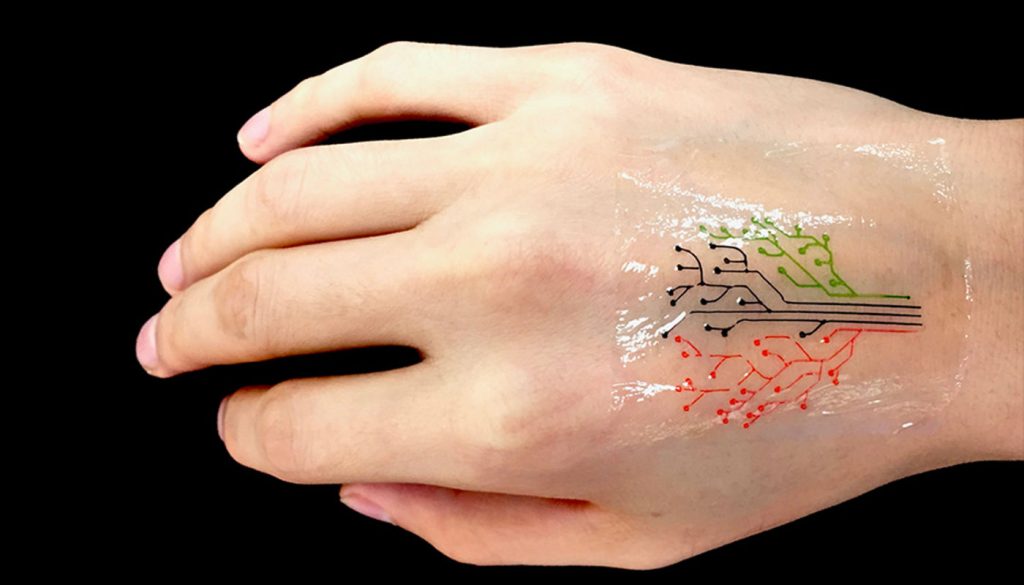Your next health check might come courtesy of this chic, discreet, 3D-printed ‘living tattoo’.
A 3D-printable ink containing genetically modified cells has been developed by engineers at MIT to create the first ‘living tattoo’ and a potential precursor to living computers.
The ink – a nutrient-rich hydrogel – contains bacterial cells genetically programmed to light up in response to chemical stimuli. Its toothpaste-like consistency means that it could sustain the bacteria, flow easily through the printer’s nozzle and hold a form, making it ideal for printing interactive 3D structures and wearable devices.
The team’s 3D ink and modified printer allowed them to create large-scale (3 cm) objects with with high precision.
“We found this new ink formula works very well and can print at a high resolution of about 30 micrometers per feature,” said Xuanhe Zhao, associate professor in civil and environmental engineering and mechanical engineering, and the project’s leader.
“That means each line we print contains only a few cells. We can also print relatively large-scale structures, measuring several centimetres,” Zhao continued.
As a proof of concept, the team created their living tattoo – a bacteria-laced tree pattern on a thin, transparent elastomer patch that can be applied to skin. When exposed to particular molecules on the skin, the bacteria would produce a green fluorescent protein, causing their section of the tree to light up.
From living wearable tech to something more
Coming from a background in mechanical, biological and electrical engineering, the researchers also saw the potential for eventually developing living computers.
Thanks to synthetic biology, researchers are able to program logic and memory capabilities into individual cells. By creating a matrix where each ink layer contains different chemicals and/or bacterial strains, Zhao and his team created a multicellular network that could communicate chemical signals via the filaments.
By programming the bacteria to respond to chemical stimuli, either given in the ink or produced by the bacteria, individual cells essentially became living transistors. In this environment, the chemicals in the ink acted as ‘input’, and the cells’ response to a chemical signal (either fluorescing or not) became output – the same binary function as when voltages are applied through a transistor on a computer chip.
Like with a computer chip, multiple transistors/cells can be used to create logic gates. Using a variety of cell and chemical types, researchers could create different logic gates. By increasing the number and types of logic gates, the biological matrix could achieve more complex calculations.
The idea is inspired by the way microbes behave in nature. Often, they are found in highly organised, 3D, multicellular systems as biofilms, or more extensive and diverse communities called microbiomes.
These intricate arrangements allow microbial communities to engage in complex functions such as cell cooperation, competition and population regulation in response to environmental conditions.
Medical applications
In their paper 3D printing of living responsive materials and devices, the team said that this technique could be used to create wearable devices, structures and implants that can be used for targeted drug delivery, monitoring inflammatory biomarkers and fashioning cartilage-like structures.
They also suggested their method could be used to print ingestible units, which could be used to alter the gut microbiota and treat diseases such as obesity and diabetes.
